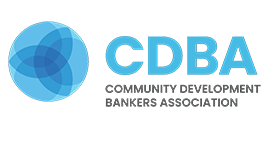News
The Mississippi Backwater Flood of 2019 has been a devastating event for the residents of the South Delta in Mississippi. The people, farms, businesses, homes, and wildlife have been affected for months with the impact lasting for years to come. Bank of Anguilla has been a huge part of the community for 115 years and will continue to support and provide relief to the South Delta in helping overcome this disaster.
Legacy Bank and Trust invited Rep. Billy Long (MO-07) to their offices over the Congressional Recess to discuss the importance of CDFIs in the community. Pictured from left to right are: Brandon Taylor, CFO of Legacy Bank; Rep. Billy Long (MO-07); John Everett, President and CEO of Legacy Bank; and Brett Mager, Chief Lending Officer of Legacy Bank.
The relative rarity of banks in nonwhite neighborhoods is exacerbating the racial wealth gap by leaving African Americans more reliant on expensive financial services such as payday lending institutions, according to Reuters, citing research by McKinsey & Co. The study found that majority-white counties have an average of 41 financial institutions per 100,000 people, compared to 27 in nonwhite majority neighborhoods. It also found banks in majority-black neighborhoods tend to require a higher minimum account balance, with an average minimum of $871 in black neighborhoods compared to $626 in white neighborhoods.
Everyone should consider impact investing, says Lori Chatman, SVP at Enterprise Community Investment. "Increasingly, investors are demanding positive social outcomes without sacrificing return or assuming undue risks," says Chatman. Being intentional about desired non-financial outcomes is core to impact investing or values-based investing. For nearly 40 years, Community Development Financial Institutions (CDFIs) have been making investments that impact people’s lives, communities, and the planet. According to Chatman, they are a prime vehicle for investors and asset managers seeking impact. For example, on the financial return side, investing in housing that is affordable for low- and moderate-income families is not susceptible to market cycles, delivers a steady return, and has a loss rate of less than 50 basis points. On the impact side, such investments enable parents to spend more time with their children without needing to work multiple jobs just to keep a roof over their heads.
U.S. Congressman Bennie Thompson (D-MS-2) joined Planters Bank and Trust Company and the Federal Home Loan Bank of Dallas (FHLB Dallas) representatives last Thursday to attend a walking tour of the Reserves at Gray Park. The Reserves at Gray Park is a mixed use, mixed income, in-fill housing development built on eight acres of land donated by the city to Greater Greenville Housing and Revitalization Association (GGHRA) in November 2014, with 42 apartment units for families at or below 80 percent of the area median income. Hailed as the Delta’s first sustainable, healthy community, the community consists of one-, two- and three-bedroom units. GGHRA received a $224,000 Affordable Housing Program (AHP) grant from Planters Bank and Trust Company and FHLB Dallas in 2018, aiding in development expenses for the Reserves at Gray Park project. Planters Bank and Trust Company has utilized FHLB Dallas products and partnered together on programs such as the AHP for nearly two decades.
Investar Holding in Baton Rouge, La., has agreed to buy Bank of York in Alabama. The $2 billion-asset Investar said in a press release Tuesday that it will pay $15 million in cash for the $99.5 million-asset Bank of York. The deal is expected to close in the fourth quarter. Bank of York, which has $82.3 million in deposits and $46 million in loans, will be allowed to make $1 million in cash distributions to its shareholders prior to closing. The bank has branches in York and Livington, along with a loan production office in Tuscaloosa. The move marks Investar's entry into Alabama.
The Financial Accounting Standards Board's new reserve methodology is unlikely to achieve its goal of helping the U.S. banking industry build reserves ahead of the next downturn thanks to the proposed delay in implementation for the vast majority of institutions. After years of debate, FASB created the current expected credit loss model, or CECL, with an eye to speed up the recognition of problems by requiring institutions to reserve for estimated losses at origination as opposed to building allowances when a loss is probable. Many bankers expect CECL to boost reserves at adoption, but we have argued that institutions are unlikely to build allowances enough to prepare for an economic downturn. That almost certainly will be the case for the vast majority of institutions in the U.S. banking industry, since FASB has now proposed delaying their implementation to 2023 — beyond the likely turn in the credit cycle.
The history of America's earliest African American banks is something that is not widely known. These banks served as an important source of credit while also offering innumerable other benefits to the consumers and communities that they served. The latest volume of the Kansas City Fed's historical book series details the stories and accomplishments of these bankers.
Earline Williams, 76, said she was gifted the best Christmas present when she received a phone call on the first of the year from Mississippi-based BankPlus, telling her she had been approved to receive funds from the Special Needs Assistance Program (SNAP). SNAP grants are awarded through members like BankPlus to provide grant funds for rehabilitation and modification of owner-occupied housing of eligible, special-needs individuals. Since SNAP's inception in 2009, more than $15.1 million has been awarded in grants through FHLB Dallas member institutions to assist more than 3,000 families across FHLB Dallas' five-state District of Arkansas, Louisiana, Mississippi, New Mexico and Texas.
You may have heard that Amazon has been in talks with JPMorgan Chase about the possibility of an Amazon-branded checking account. No doubt, Amazon is looking to streamline their customer relationship with a built-in payment system, so customers won't have to leave the site or slow down to enter payment details. And Amazon can add one more industry to its already massive reach.
